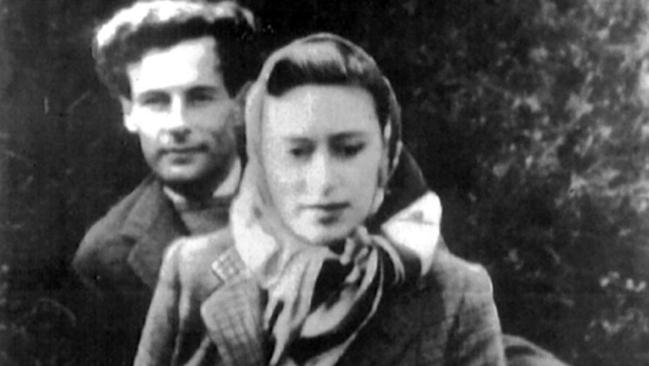War hero’s royal romance shot down by officialdom
WWII bomber pilot, Flight Lieutenant Peter Townsend claimed 11 Luftwaffe aircraft in two years service but he best-remembered as the man denied marriage to a lovelorn princess.

Today in History
Don't miss out on the headlines from Today in History. Followed categories will be added to My News.
As a WWII bomber pilot, Flight Lieutenant Peter Townsend claimed 11 Luftwaffe aircraft in two years service. Then he became an equerry to King George VI, travelled solo around the world, wrote books and selected pop tunes as a disc jockey for Radio Luxembourg.
But he is best remembered as the man denied marriage to a lovelorn princess by cold, heartless church and statesmen, although English state papers indicate the blame was misplaced.
Townsend was born a century ago, on November 22, 1914, at Rangoon in Burma, where his father was governor. Educated at Haileybury Imperial Service College, he joined the Royal Air Force in 1933.
On February 3, 1940, he was flying one of three Hurricanes that shot down a Heinkel 111, the first German war plane to crash on British soil. Townsend claimed two more German aircraft to receive a Distinguished Flying Cross in April 1940. Shot down in August, his left big toe was injured when a glycol tank exploded in the cockpit.
His toe amputated, Townsend was back in the air by mid-September, adding a bar to his DFC. Awarded a Distinguished Service Order in April 1941, after a three-week courtship he married general’s daughter Rosemary Pawle on July 17, 1941.
“Life in those dangerous days seemed a brief, precarious thing,” Townsend explained.
“So, true to that wartime phenomenon, the urge to reproduce, we rushed hand-in-hand to the altar.”
From April 1942 he commanded a Spitfire unit. With one son, Townsend was at a flight training school in Scotland when selected from three candidates as an equerry to George VI in February 1944.
Although warned to take no notice if the king shouted at him, the two immediately warmed to each other, as the king came to see the war hero as the son he never had.
Townsend, 29, met Princess Margaret, 13, and Elizabeth, 17, on his first day at Buckingham Palace. Over nine years in royal service he constantly accompanied the princesses and other royals on public engagements. In 1945, when Townsend and Rosemary lived at Adelaide Cottage near Windsor Castle, King George become godfather to his second son.
Encouraged to “take care” of the princesses during a royal visit to Edinburgh, Townsend amused them with a gangster film at the local cinema.
By 1947, when Townsend joined a three-month South African royal tour, his absences had strained his marriage. On tour, Townsend helped and encouraged a nervous Margaret. As the teen princess was linked with several suitors, it was suspected her parents hoped Margaret would wed “Johnnie”, the Earl of Dalkeith. Instead she became closer to Townsend, who, with Rosemary, was also friendly with Princess Elizabeth and her new husband, Philip. But Rosemary moved out of Adelaide Cottage late in 1951.
The king’s death in his sleep in February 1952, devastated Margaret. She turned to the church and Townsend, who shared her faith, as her mother and sister arranged the coronation. Retained by the Queen Mother, Townsend moved with her and Margaret to Clarence House. In December 1952, he was granted a divorce on grounds of his wife’s misconduct with John de Laszlo.
A piece of fluff on his uniform, delicately removed by Margaret at Elizabeth’s coronation in June 1953, announced a royal love affair.
Under the 1772 Royal Marriages Act, Margaret required the Queen’s permission to marry before age 25. As head of the Anglican church, the Queen could not approve marriage to a divorcee. After 25, Margaret needed parliament’s approval.
After news of the proposed marriage leaked in the press, Townsend was sent to Brussels for two years as air attache at the British embassy. When Margaret turned 25 in August, 1955, it was understood parliament refused consent for her marriage unless she renounced all royal privileges and lived abroad for two years, although 75 per cent of subjects approved marriage to Townsend.
As newspapers implored her to make a decision, new prime minister Anthony Eden, a remarried divorcee, negotiated with the Queen and church leaders to clear the way for Margaret’s marriage.
When she released a statement, drafted with Townsend, on October 31, 1955, stating that, mindful of church teaching “that Christian marriage is indissoluble, and conscious of my duty to the Commonwealth”, public opinion held that parliament had refused permission.
But papers released in 2004 revealed that, days before Margaret’s announcement, the government had prepared a statement to parliament announcing a marriage, requiring only that she give up her rights to succeed to the throne and marry in a register office. She could live in England, keep her royal highness title and Civil List allowance of £9000 a year.
Townsend visited Margaret several times after they decided not to marry, but returned to Brussels where he had already met heiress Marie-Luce Jamagne, who became his wife in 1959. Settled in France, they had three children. Townsend died on June 19, 1995.
Originally published as War hero’s royal romance shot down by officialdom


